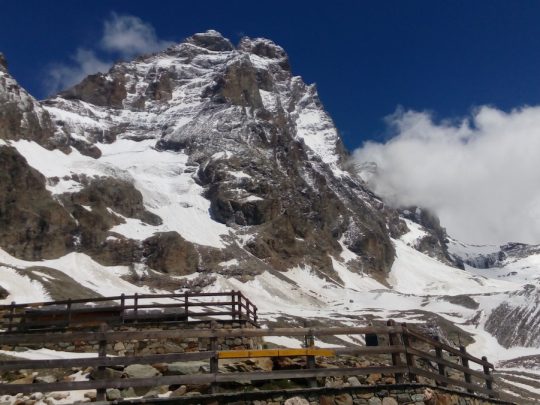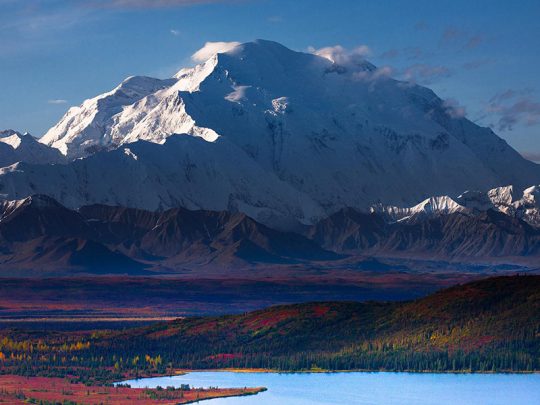- Guides
- B2B
-
Climbs
-
Climb Elbrus
- Elbrus individually
- Elbrus from the South, 9 days
- Elbrus from the South, 7 days
- Elbrus from the South in 1 day
- Elbrus from the North
- Elbrus Two Summits
- Elbrus Traverse South to North
- Elbrus Traverse North to South
- Elbrus "Cross" from South
- Elbrus "Cross" from North
- Kazbek+Elbrus
- Elbrus from the West
- Elbrus by helicopter
- Elbrus holidays, 9 days
- Elbrus holidays, 7 days
- Tinder Tour: Climbing Mount Elbrus
- Climb Elbrus from the South, 9 days with Sergey Baranov
- Under 5000 m
- 5000+ meters
- 6000+ meters
- 7000+ meters
- 8000+ meters
-
Climb Elbrus
-
Trekking
-
See 8000m
- K2 base camp
- Everest base camp
- Everest base camp via Gokyo
- Everest base camp in a week
- Annapurna circuit
- Trekking the Manaslu Circuit
- Trekking to Kanchenjunga Base Camp
- Trekking to Kanchenjunga Base Camp (Short)
- Trekking to Kanchenjunga Base Camp (India)
- Trekking to Makalu Base Camp
- Trekking to Annapurna BC
- South America
- Asia
- Africa
- Russia
- Europe
-
See 8000m
-
Adventures
-
Africa
- Tour to Morocco for New Year
- Morocco: Toubkal and the mysteries of the Sahara
- Tour to Eritrea: Dahlak Archipelago and Rashaida Nomads
- Tour to Rwanda: Mountain Gorillas and Mount Bisoke
- Ethiopia
- Tour to Uganda: Queen Elizabeth National Park and Mountain Gorillas
- Safari Tanzania
- Safari Uganda
- Tour to Zimbabwe and South Africa: Victoria Falls, Cape Town, and Cape of Good Hope
- Namibia
- Safari Kenya
- Tour to Botswana: Okavango Delta and Chobe National Park
- South America
- Asia
-
Africa
- Ski-touring
- VIP
- Useful
- About
Climb Carstensz

- Height (m)
- 4884
- Duration
- 7 days
- Difficulty
- Average
- Continent
- Australia
- Children
- From 14 years old
- Accomodation
- There are tents
19000 $
Why to go with us?
About the tour. The lowest and most remote of the Seven Summits, Carstensz Pyramid (or Puncak Jaya) is also one of the most technically challenging. Flanked by glaciers, the peak rises like a shark’s fin from the jungle. Those considering a climb of Carstensz Pyramid should bear in mind that the expedition involves a degree […]
НаверхAbout the tour.
The lowest and most remote of the Seven Summits, Carstensz Pyramid (or Puncak Jaya) is also one of the most technically challenging. Flanked by glaciers, the peak rises like a shark’s fin from the jungle.
Those considering a climb of Carstensz Pyramid should bear in mind that the expedition involves a degree of uncertainty and may require last-minute changes to the itinerary due to possible political instability in the region. Climbing Puncak Jaya can therefore be classified as a perfect ‘adventure trip’, full of achievement and discovery, with the promise of rare cultural experiences and classic rock climbing
The route traverses challenging terrain. It is a tough, long trek to and from base camp. The main challenge of the Carstensz Pyramid climb is technical rock climbing and not just (or not so much) high altitude climbing. All group members need to be familiar with the techniques and master the skills of ropework and rock climbing. The round-trip from base camp usually takes 12-14 hours. The trek from Sagapa village to base camp is 67km. On the north face and up to the summit ridge, the route follows fixed ropes over slabs and corners. The lower part of the route involves scrambling and rock climbing of the ‘difficult’ category. There are three notches on the ridge, the first of which requires the use of a Tyrolean traverse.
Physical fitness required to climb Puncak Jaya.
All participants in the Carstensz Pyramid Climb must be in excellent physical shape and condition in order to integrate properly into the team and to enjoy the trip personally. Physical fitness is also required in the interest of both personal success and safety. Adequate training and experience of carrying heavy packs (approximately 30 lbs or more) for several days is required to achieve the appropriate level of fitness.
7-day itinerary of the Carstensz Pyramid Climb with guide (helicopter drop).
Day 1. Meeting at Timika airport, transfer to the hotel, meeting with the guide, check of equipment and receipt of permits. Dinner and instructing the group. Overnight at the hotel.
Day 2. Helicopter flight to the base camp of Carstesz Pyramid (4100m), easy acclimatisation walk, test of equipment use.
Day 3. Testing the use of the equipment, acclimatisation.
Day 4. Climbing the Carstesz Pyramid (4884m), 10-12 hours of climbing of varying difficulty, the region often has rainy weather – be prepared for this.
Day 5. Reserve day.
Day 6. Flight to Timika.
Day 7. Departure.
Included in the price of the ascent of the Carstensz Pyramid:
- Experienced English speaking guide.
- Local guides.
- Helicopter transfers to and from base camp.
- Double room accommodation in hotels.
- Necessary permits for climbing.
- Equipment, wages and insurance.
- Meals (three meals a day) and fuel during the trek and at base camp for participants.
- Ecological fees.
- Dining tent.
- Fixing of ropes.
- All transfers according to the program.
- Equipment for the group (ropes, ice screws, radios, first aid kit, satellite navigator/GPS).
Not included in the price of the Carstensz Pyramid Climb:
- International Flights to Timika (Indonesia).
- Indonesian Visa.
- Local porters.
- Medical insurance.
- Private equipment.
- Expenses in case of early termination of the expedition.
- Tips.
- Expenses in case of flight delay or cancellation.
- Overweight on aeroplanes.
- Change of hotel or individual accommodation.
- Any costs caused by the changing of the programs
Insurance
НаверхEquipment for climbing Carstesz Pyramid peak:
Скачать PDFDocuments
- Valid passport.
- Flight tickets.
- Medical insurance.
Personal equipment:
- Backpack. 50-60l.
- Sleeping bag, comfort temperature from -15C to -5C.
- Sleeping mats.
- Trekking poles.
- Harness.
- Carabiners, 5 pieces.
- Mountaineering lanyard.
- Ascender.
- Belay device.
- Cup-Spoon-Bowl.
- Climbing helmet.
Clothing and footwear:
- Trekking boots.
- Trainers (for cities).
- Waterproof layer – jacket + trousers. The industry offers a wide range of products, from simple 5000/5000 membranes to Gore-Tex products.
- Fleece suit.
- Thermal underwear layer – top and bottom.
- Thick gloves.
- Thin gloves.
- Neckerchief.
- Cap.
Miscellaneous:
- LED Headlamp.
- Sunglasses.
- Gaiters.
- Sunscreen and lip balm.
- Chemical heaters (not essential, but can be very useful).
- Personal first aid kit.
- Elastic bandage and/or support bandage.
You may also like
-
 4,490 $
4,490 $Climb Matterhorn
-
 55,490 $
55,490 $Climb Vinson
- Height (m)
- 4892
- Duration
- 21 day
- Difficulty
- Moderate
- Continent
- Antarctica
- Children
- From 14 years old
- Accomodation
- There are tents
-
 18,690 $
18,690 $Climb Denali (Mc.Kinley)
- Height (m)
- 6193
- Duration
- 21 day
- Difficulty
- Average
- Continent
- North America
- Children
- No
- Accomodation
- There are tents